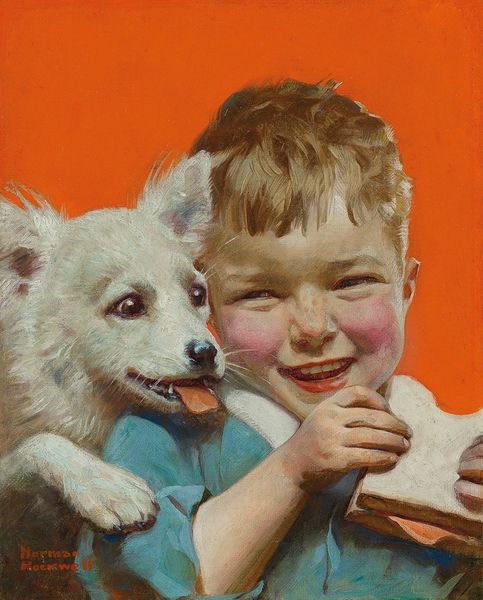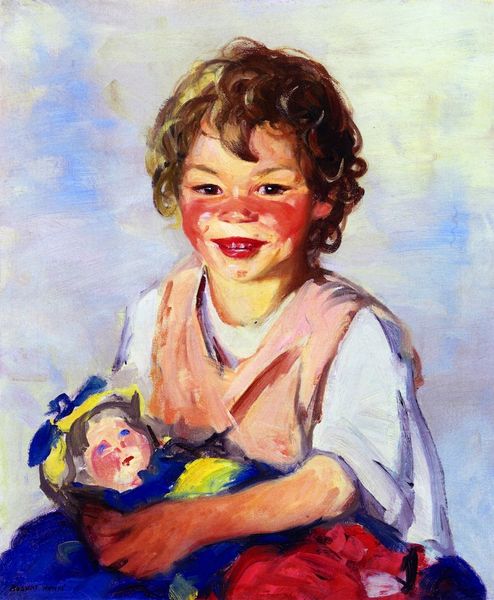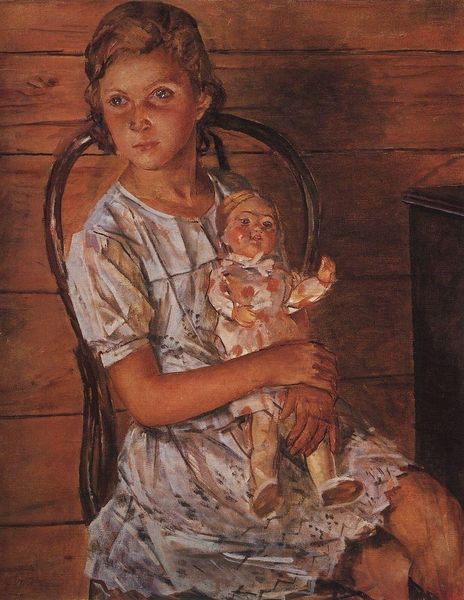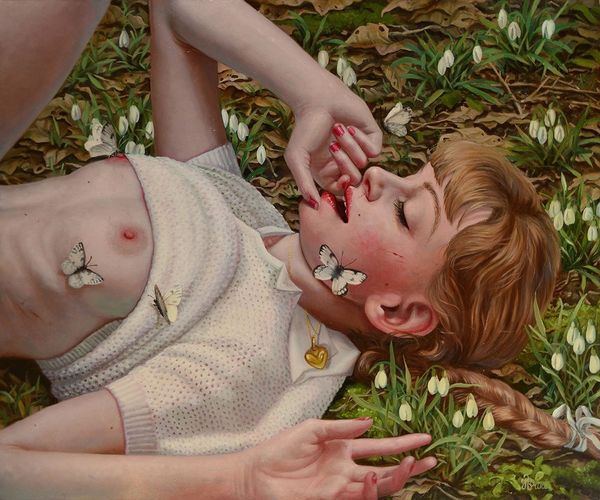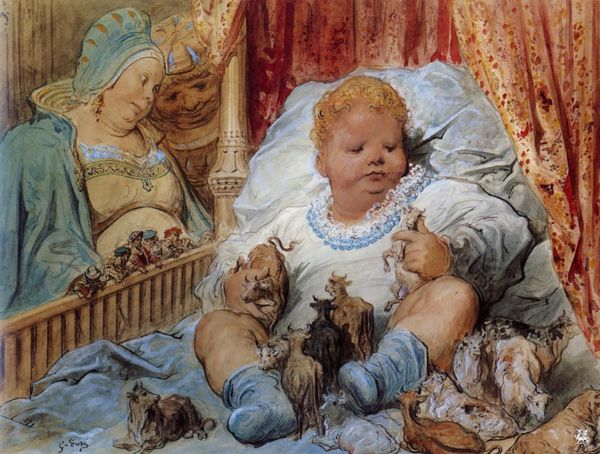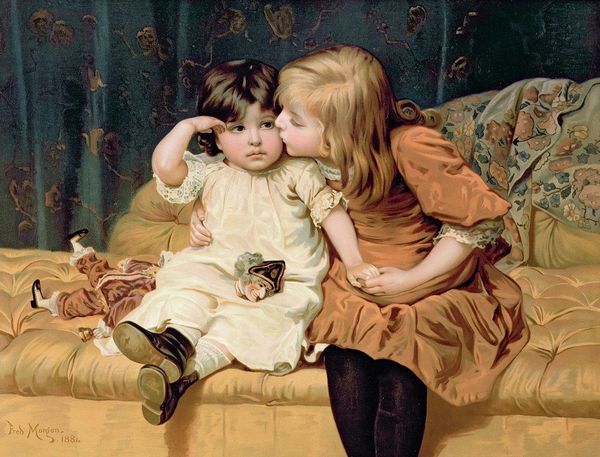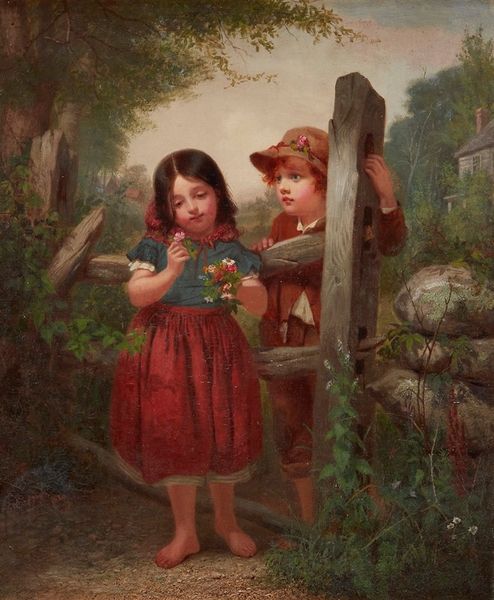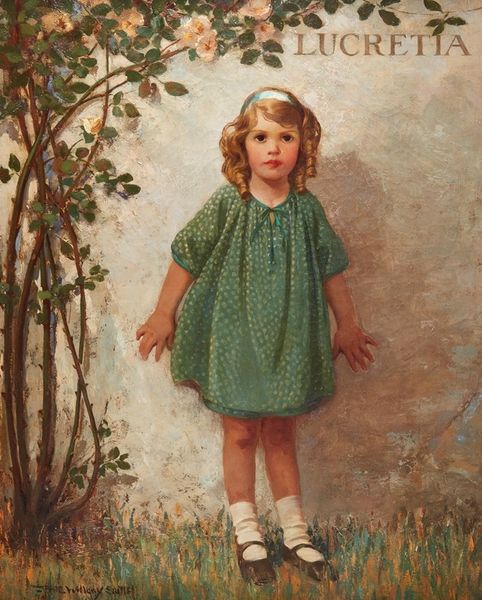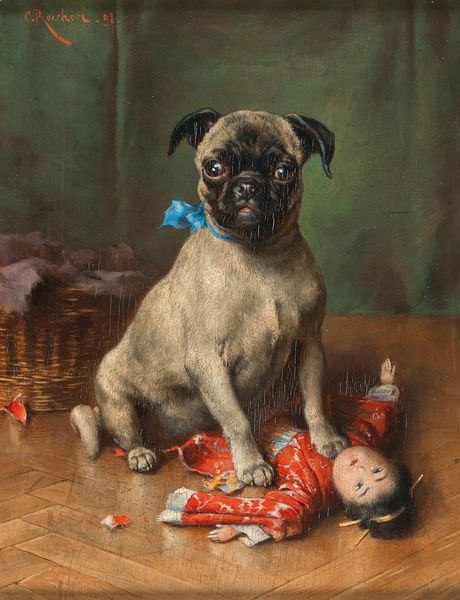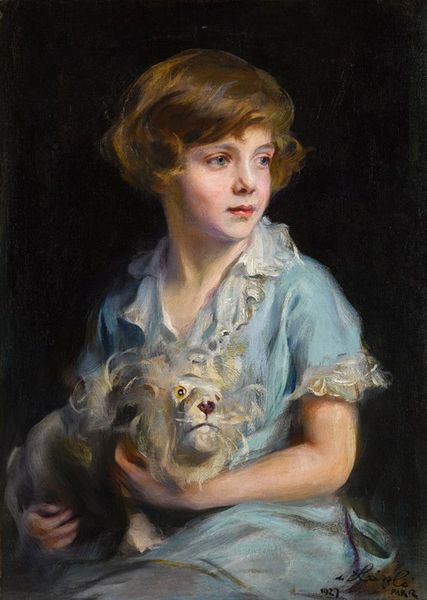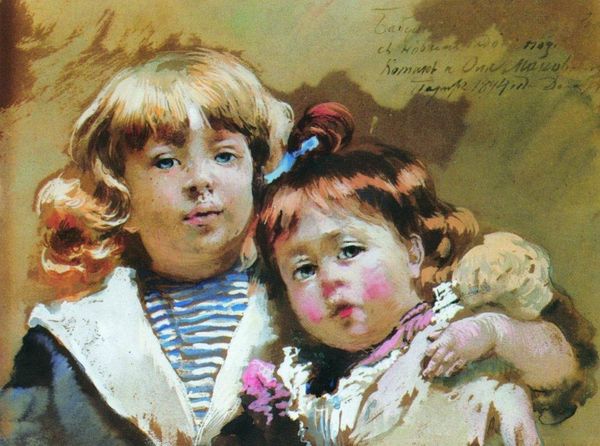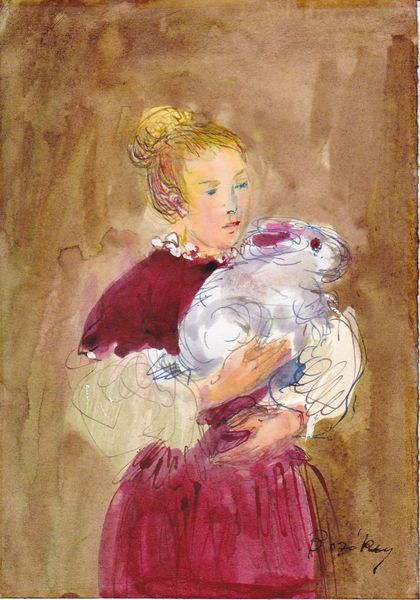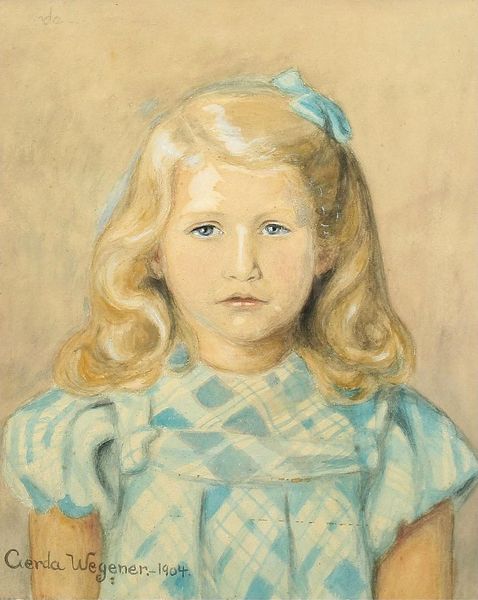
Copyright: Zinaida Serebriakova,Fair Use
Curator: Zinaida Serebriakova created this artwork in 1947, a pastel on paper titled "The Popoffs' doll, teddy bear and toy elephant." What's your immediate response? Editor: I'm struck by the wistful feeling, almost a melancholic tenderness. There’s a quiet story embedded in these worn objects, especially considering when it was made. Curator: Indeed. The composition is fascinating, the way the doll’s gaze anchors the whole arrangement. Note how the planes are stacked almost claustrophobically, pushing the forms to the foreground and challenging the viewer’s perspective. It exemplifies a modern, almost fragmented pictorial space. Editor: And think about the labor embedded in these objects. The rough stitching of the teddy bear, the molded porcelain of the doll—these were painstakingly made. This wasn’t mass-produced plastic; these were crafted commodities embodying care and human touch. I wonder if Serebriakova was consciously drawing our attention to the contrast between crafted intimacy and what was lost, or gained, in industrial reproduction. Curator: Certainly, there is an undeniable contrast. From a purely formal standpoint, however, the artist's deftness with pastel is what commands attention. Serebriakova balances a restrained palette with a bold application of color. Notice the juxtaposition of blues and pinks in the doll’s dress against the earthy tones of the bear; it generates a quiet tension. Editor: A tension that speaks volumes about material culture, though, doesn’t it? Toys reflect aspirations and values, particularly of the ruling class. Are these symbols of a cherished, sheltered childhood, or relics of a society grappling with upheaval, recast here in softened lines and tones of remembrance? The scarcity of high quality manufactured toys given post war realities makes me wonder about how these objects survived. Curator: I’m compelled by that reading. What began as a domestic still-life, it reveals an intimate narrative. Editor: Exactly, from its texture to the labor involved to manufacture these objects during this period, it invites a reflection of history of manufacture. Curator: A perfect bridge to understand how she turned the seemingly ordinary into the unforgettable. Editor: An astute interpretation that underscores the power and the complexity inherent to objects themselves.
Comments
No comments
Be the first to comment and join the conversation on the ultimate creative platform.
